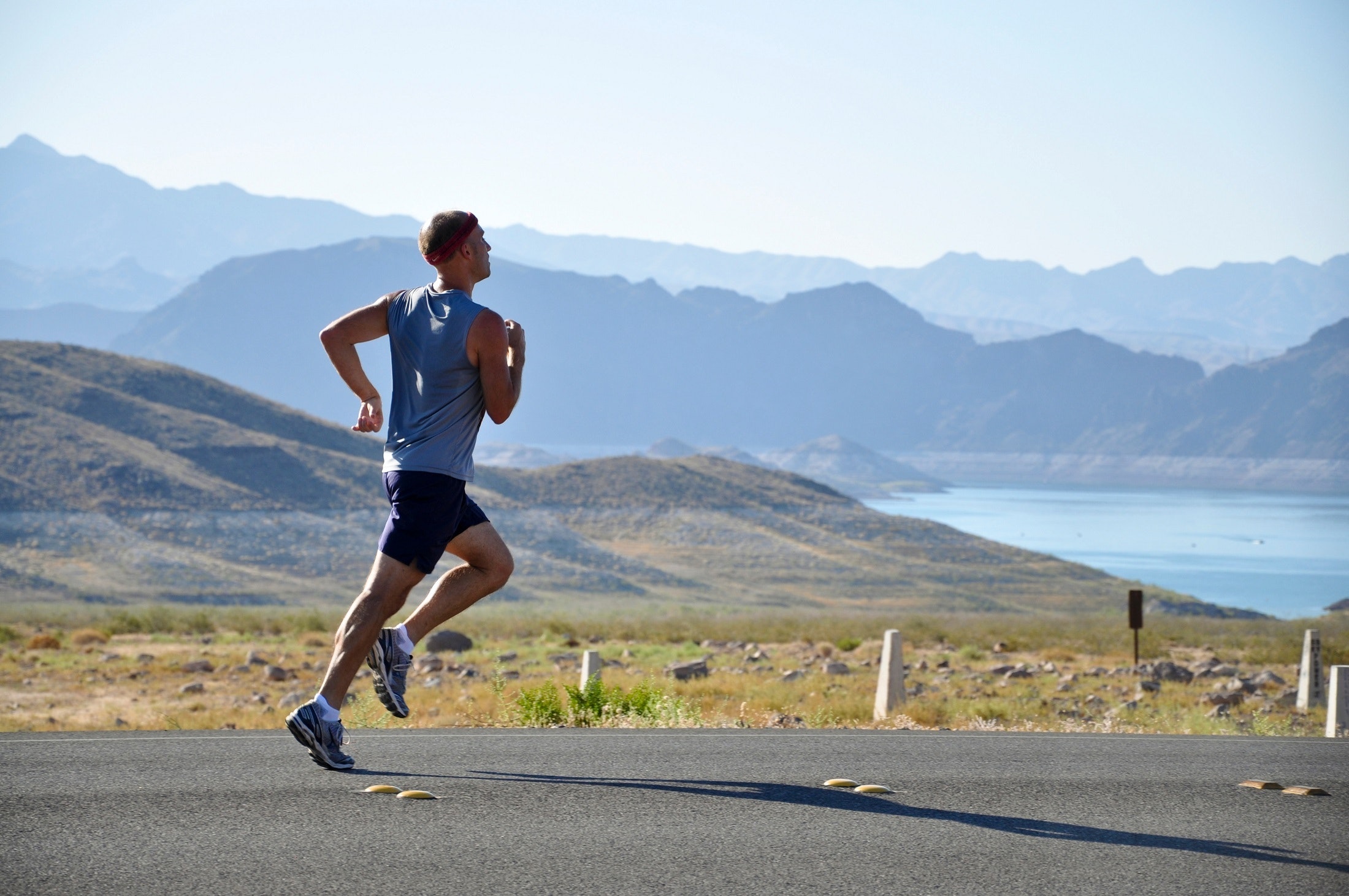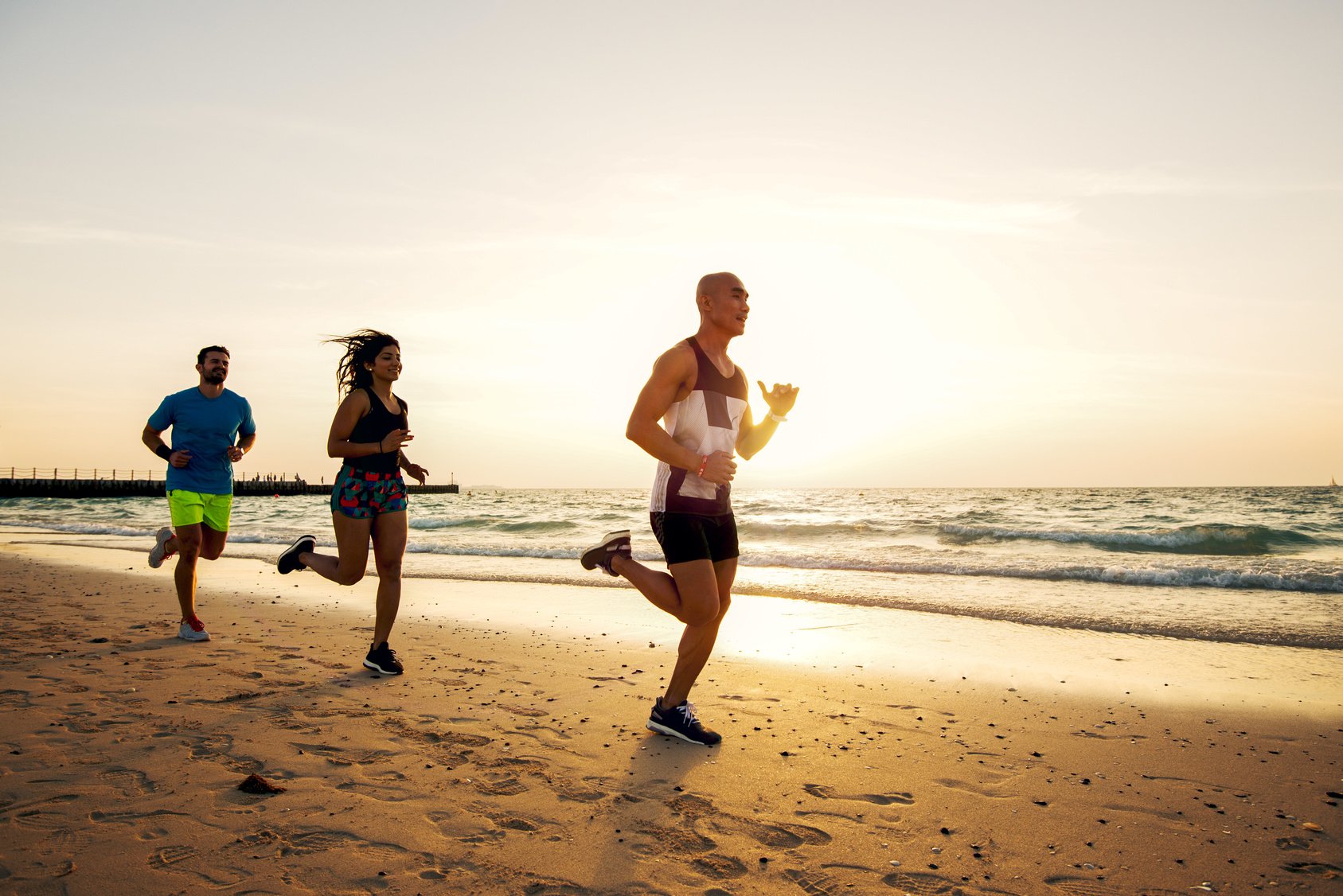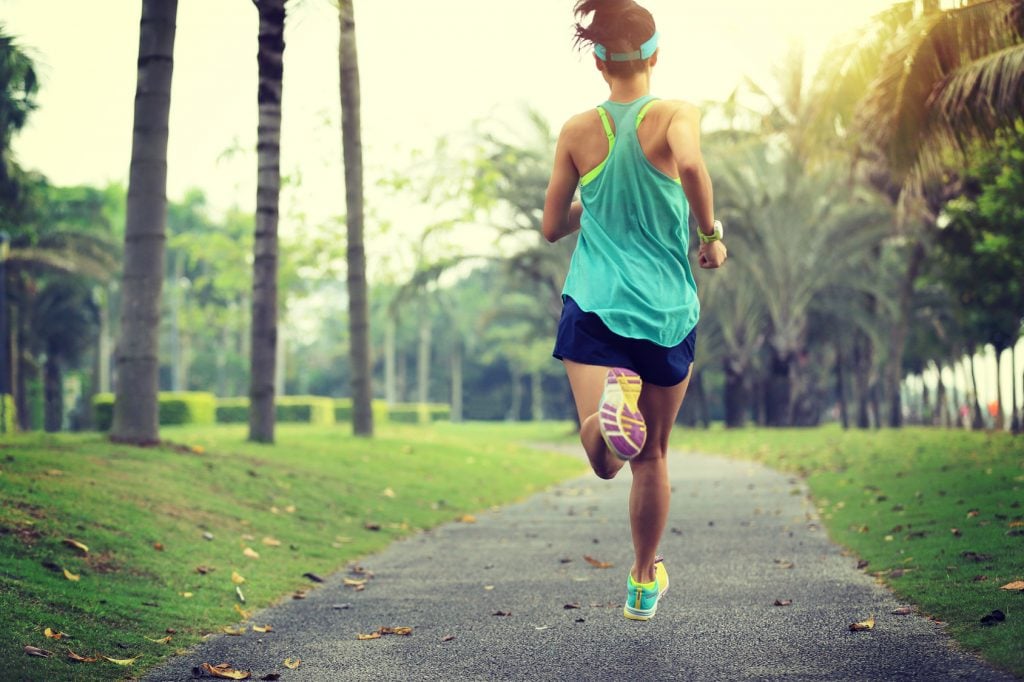Running is awesome.
Research has shown that it prevents a host of chronic diseases, improves mood, burns calories, helps maintain a healthy weight, increases lifespan, improves brain power, and so much more.
However, getting into running may seem daunting—especially for the complete beginner.
Fret no more. I got you covered, buddy.
In today’s post, I’m going to share with you some of my favorite running tips for beginners to get you started on the right foot—literally and figuratively.
So are you excited? Then here we go.
How To Get Into Running?
The answer is simple: slow.
This is the best way to get into running without risking injury or burnout.
Most beginners make the mistake of starting too fast, too hard, then they get hurt or overtrained (sometimes both) within a few weeks. You are asking for burnouts and/or overuse injuries such as Runners Knee, Stress Fractures, etc.—all of which can sideline you for many weeks, compromising and ruining your training resolve.
Even if you’re already in decent shape, have perfect technique, and have $200 shoes, running will always be a high-intensity, high-impact exercise. Don’t mess with that.
So how do you put this into practice?
Simple. Schedule three to four one-hour walks for a couple of weeks before you try running. This way, you get your body moving without putting too much stress on it.
The next step is to start to gradually introduce running to your sessions. Let’s see how.
The Walk/Run Demystified – How to Get Into Running The Easy Way
After three or four weeks of walking, including some relatively faster walking/jogging intervals—low-intensity jogging alternated with brisk walking for recovery.
The ideal session comprises warming up with walking for 5 to 10 minutes, then jogging for 30 to 60 seconds or so, alternating with walking recovery periods.
As you get fitter, increase the time spent running while taking less and less for recovery until you can run for 30 minutes straight with little huffing and puffing.
Start with short periods of first—8 minutes, then 10, then 13, then 15, and so on.
Later down the road, once you’re comfortable running for 30 to 40 minutes, then, and only then, you can add distance and intensity.
Walking to Running Ratios
To practice the walk-run method the right way, take the walk breaks before you start getting tired. That’s the way to go.
Contrary to popular belief, this beginner runner method does not mean that you should take breaks only when fatigued.
As a matter of fact, the walk/run method is about taking recovery breaks way before fatigue starts to set in.
Here are three walk-to-running ratios to experiment with. Pick the ratio that feels the most appropriate for you.
- The Newbie:Jog for 20 to 30 seconds. Then walk for one to two minutes
- The Intermediate:Jog for three to five minutes. Then take a two to three minutes walking break.
- The Experienced: Jog for eight to ten minutes. Then walk for 30-second to one full minute.
Take Your Time When Starting a Running Routine REORDER
Gradual progression is the other cardinal rule.
If you’re not willing to follow this rule, then you shouldn’t bother running—or doing any other form of exercise—as you’ll only end up hurting yourself.
If you got injured and hurt early on, your interest will fizzle, your enthusiasm will fade, your motivation will hit rock bottom, and you’ll give up.
What should you do instead?
Your body needs time to adapt. That’s a key principle for injury-free and effective training—whether you’re a running newbie or an elite Olympic weightlifter.
It takes time (roughly two to three months of regular training) for your ligaments, tendons, joints, and muscles to adjust to the high-impact forces of running. Try to rush this process, and you’ll, sooner than later, end up injured.
Becoming a full-time runner does not happen overnight. It requires patience and gradual progress. You didn’t become a complete total couch potato in 4 weeks, so you shouldn’t expect to get fit and in shape in 4 weeks.
So, please progress slowly. Aim to increase your actual time spent running by no more than three to five minutes from one session to the next.
Distance Matters
TIME first, DISTANCE later. Make that your motto.
I hate to sound like a broken record, but you can only add distance and intensity once you have built enough cardio and stamina and are used to the rigors of running.
And please keep in mind that you have the rest of your life to work on getting fit. Don’t let unrealistic expectations dictate the pace of your workouts.
Comfortable Pace–The Talk Test
One thing you can do to exercise within your capacity is to monitor your training pace.
Enter the Talk Test
This is the best way to monitor your training pace and effort is the Talk Test.
The Talk Test has been around for decades, and it’s still here because it’s simple and it works like a charm.
The principle is, if you can carry on a conversation with your training partner while training, then you’re not overly challenging your cardiovascular system.
But, if you’re huffing and puffing your way through, you’re running too hard.
Your breathing should be under control, and you should be able to maintain a conversation with your training buddy without gasping for breath on every step you take.
You should be able to recite the Pledge of Allegiance without much trouble.
Rest
Do not ignore recovery days. They are as vital to fitness progress as the training itself. They are also essential for preventing injury and burnout.
So, as a rule of thumb, take plenty of rest between workouts, with two days off every week.
For more on proper recovery, check my article here.
How Long Does it Take
So, how long will it take to become a runner?
I hate to sound like a broken record, but every runner is different and responds differently to the high-impact stress of running.
That’s why answering the question “when will running start to feel easier for me?” is tricky. Every runner is unique—with every meaning of the word.
It all depends on the individual. No more. No less.
There is no right or wrong answer because every individual is unique and has a different starting point. So, the answer depends on you.
But, all in all, here are some factors to consider when attempting to find out how long it will take you to become a runner—whatever that means for you.
- Your current shape—or how to fit you where before you take up running.
- Your age.The younger you are, the quicker you can get in shape.
- Your current body weight. If you are overweight or many pounds heavier, then chances are it’s going to take you a little bit longer than someone with a healthy weight.
Conclusion
There you have it. If you’re planning to get into running then today’s article should get you started on the right path. The rest is really up to you.
Please feel free to leave your comments and questions in the section below.
In the meantime thank you for dropping by.
Keep training strong.























